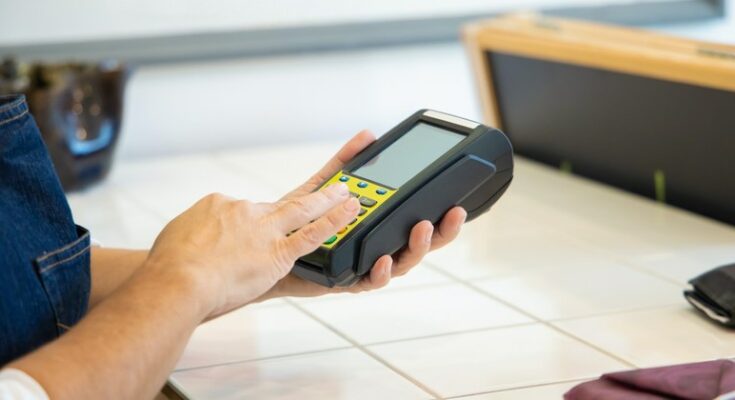POS (Point of sale) systems are integral to the smooth operations of businesses all around the world. Aside from serving as a cash register, business owners also turn to them for managing inventory, checking on employees, and even handling customer services.
To have a better appreciation for POS systems, it is important to look back on their history and gain a more in-depth understanding of how they have changed over time. From its humble roots in an American saloon to its evolution into different types of POS available over time, here is a quick rundown on POS’ development over the past centuries.
The late 1800s – The Mechanical Cash Register
Before POS systems, business owners had to do everything the old-fashioned way: either by listing things down or simply remembering purchases for later bookkeeping. And for a time, this method worked. The owners can keep up with the transactions, and they can trust their staff (which could be family members) to promptly store the payments after each purchase.
However, after the American Civil War in the 1860s, businesses boomed, and to keep up with demand, owners had to hire more strangers as employees. However, since tracking inventory and payments at this time was inefficient, employee theft was common and a big problem for business owners.
One such owner is James Ritty from Dayton, Ohio. He was the owner of The Pony House, a well-visited saloon. By all accounts, the business should be prospering, but he realized that his staff was stealing from him. To address this, he decided to invent a kind of tally machine that will eventually serve as the foundation for the future POS system.
Together with his brother John, the two created a prototype for the first cash register (the very first POS device), which James Ritty patented as “Ritty’s Incorruptible Cashier” in 1879. It had a big clock-like display, which showed the sums paid by customers, and an inside compartment which tallied purchases.
Ritty founded a factory to manufacture these cash registers, but it did not take off. Caught between two businesses and preferring saloon life overall, Ritty eventually sold the company to Jacob H. Eckert in 1881. He renamed the business the National Manufacturing Company. To increase marketability, Eckert improved the design by adding a cash drawer and a bell, which will chime each time the drawer opens.
However, the product was still unknown and difficult to sell. Thus, in 1884, Eckert ended up selling the company to John H. Patterson, a coal shop owner in Coalton, Ohio. The company changed its name once more to National Cash Register Company (NCR) and developed the design even further by adding a paper roll for printing receipts and preventing fraud. This time, the cash register finally took off and became a staple piece of equipment in shops.
The 1900s – From Mechanical to Electronic Tills
The early cash registers were purely mechanical, but this quickly changed at the start of the 20th century. By 1906, one of the inventors in NCR, Charles F. Kettering invented a till that had an electric motor. It made checkouts faster and tracking purchases more effective, but beyond that, there were very few innovations on the till for decades.
It was in the 1950s and 1960s when electronic calculators entered that market that cash registers went through a significant transformation once more and became fully electronic. By the 1970s, electronic cash registers (ECR) had become the norm, and they made great strides particularly in the food industry. IBM introduced the first POS system for restaurants in 1973, and the following year, the first till with microprocessors was created for McDonald’s.
The development of POS systems was at full throttle by the 1980s and 1990s. In 1985, IBM launched the first PC-based POS system. Afterward, in 1986, Gene Mosher, a deli owner, created the first POS software (named ViewTouch) for a graphic touchscreen interface. This particular software, with its simple user interface and colorful design, served as a template for internet browsers later on. In the 1990s, Microsoft Windows developed its own POS systems for computers, and several other companies followed suit.
The 2000s – POS Systems Go Mobile
While POS systems advanced significantly in the late 20th century, they still had limitations. For one, businesses were responsible for upgrading and maintaining the software and hardware of these high-performing tools, and not all companies had the resources to accomplish that. Secondly, business info was limited to company premises where the POS system was installed, which hindered data accessibility.
With the advent of the internet and the emergence of cloud technology, developers could finally offer POS facilities through the SaaS model. SaaS–short for subscription-as-a-service–means companies pay a monthly or annual fee to use the software and the developers are in charge of the POS system’s maintenance and updates. This step played into the shifting dynamics of workplaces, from office-based to remote working, and it also made POS tools more accessible to smaller vendors.
Overall, the journey of POS systems from the simple cash register to the integrated program people use today is a long one. It had a lot of ups and downs and is a sum of the contributions of many talented people and companies that sought to streamline business operations and contribute to their growth. Bear in mind, however, that developers are still at work and pushing the limits to what a POS system can do. Only time will tell how it will function and help other businesses in the future.



